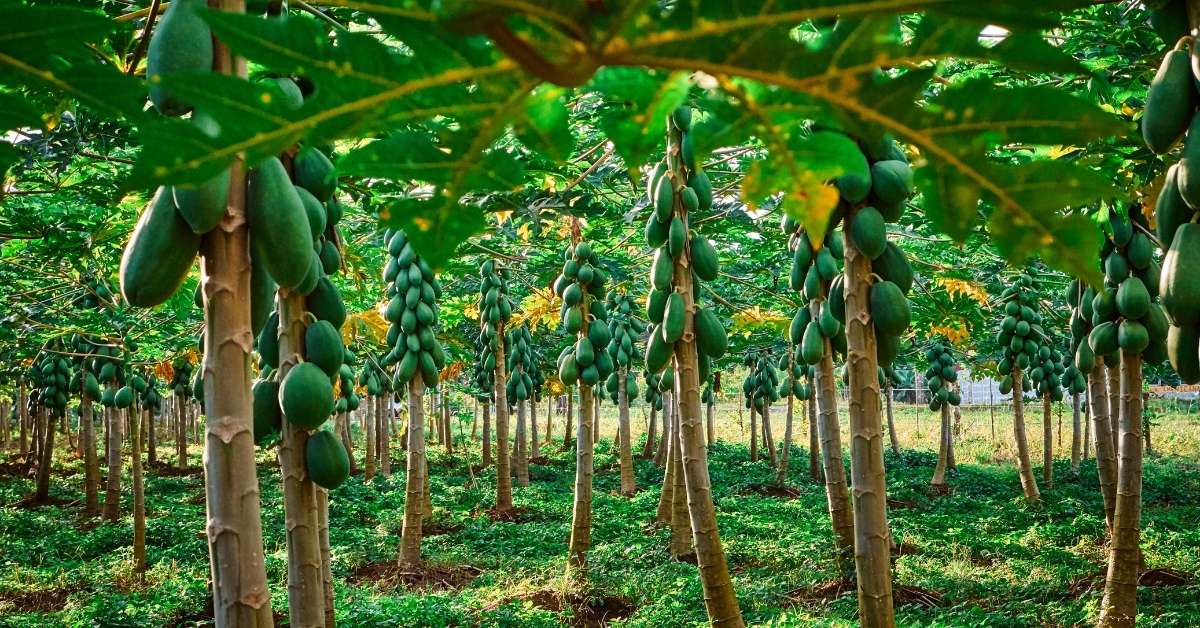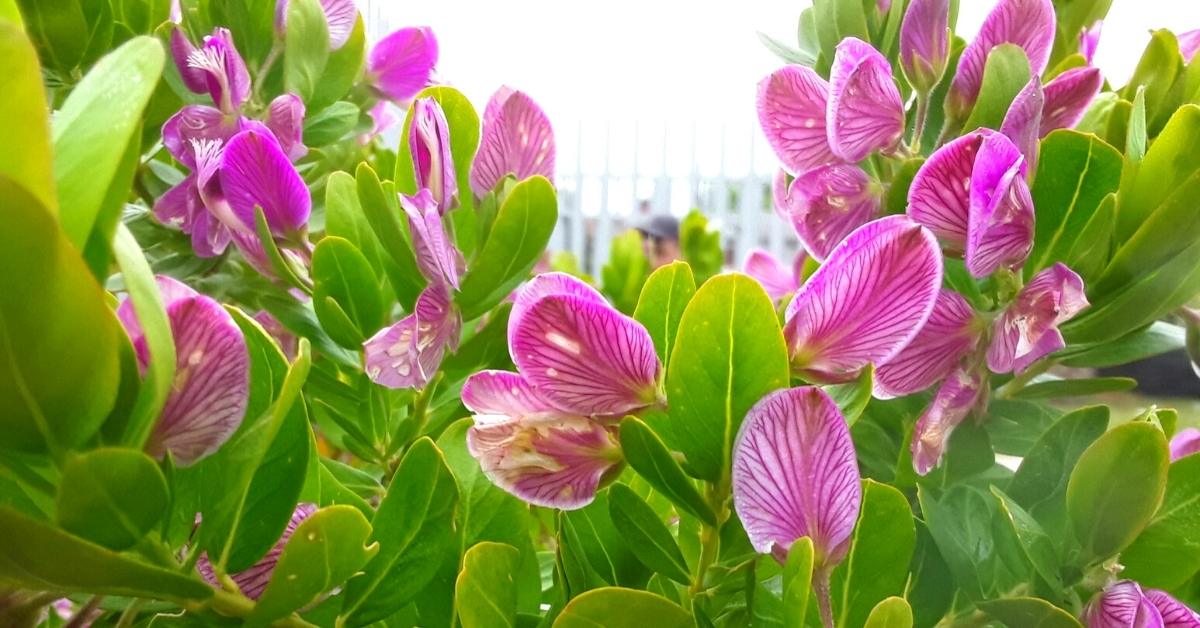Growing fruit trees remains the perfect way to get fresh fruit right at your doorstep. There is nothing that is tastier than a fresh apple or peach picked right off the tree. Even if you live in the city, the best method to get fresh fruit in your yard is to select the appropriate fruit tree for your USDA zone. Here are the best fruit and nut trees to grow in zone 5 to zone 9 areas in the U.S. Nowadays, zone 5 perennials are one of the most demanded plants to know and grow.
What is Perennial?
“A perennial plant or simply perennial is a plant that lives more than two years. The term (per- + -ennial, “through the years”) is often used to differentiate a plant from shorter-lived annuals and biennials. The term is also widely used to distinguish plants with little or no woody growth (secondary growth in girth) from trees and shrubs, which are also technically perennials.” – Wikipedia.org
Fruit trees that thrive in Zones 5-7 come in a wide range of types. Because winter temperatures in Zone 5 may drop to as low as -20 to -30 degrees Fahrenheit, the fruit tree you choose must be cold-hardy.
Many fruit plants also require pollinators to guarantee optimal blossoming and fruit production. Unless the variety explicitly specifies that it is self-pollinating, you will need two or more trees to ensure adequate pollination.
Which Fruit and Nut Trees are Best to Grow in Zones 5-9?
The apple tree is one of the most delicate all-around fruit plants for colder regions. Choose an apple variety that ripens in the middle of the growing season or later in the growing season if you want to preserve them. Apples from later harvest store better than those from early harvests.
Apple
Apples do reasonably well in cold temperatures if you select the suitable varieties of apples. Let’s take a closer look. For instance, the delicious and expensive Honeycrisp apple grows on a tree that is hardy down to Zone 3 and -40 degrees F. Let’s take a closer look.

Pink Lady apples are also performing well despite the colder winter temperatures in Zone 5.
The Akane apple variety is one of the other zone 5 perennials. It has been around since 1937. It is a smaller apple that blooms late and performs well in cooler climates, making it perfect for Zone 5 or higher growth.
Another hardy apple tree is the vintage Ashmead’s Kernel apple. The fruit is not as pretty as the apple above trees, but the tree’s fruit produces an excellent tasting specimen for eating raw and making apple cider.
Honeycrisp Apples
The Honeycrisp apple variety is one of the most costly kinds of apple right now. Because the tree is hardy from Zone 3 to Zone 8, many individuals in cold regions may plant this hardy apple tree and enjoy the advantages of the beautiful fruit at a low cost. The crisp apple has a sweet and tangy flavor.
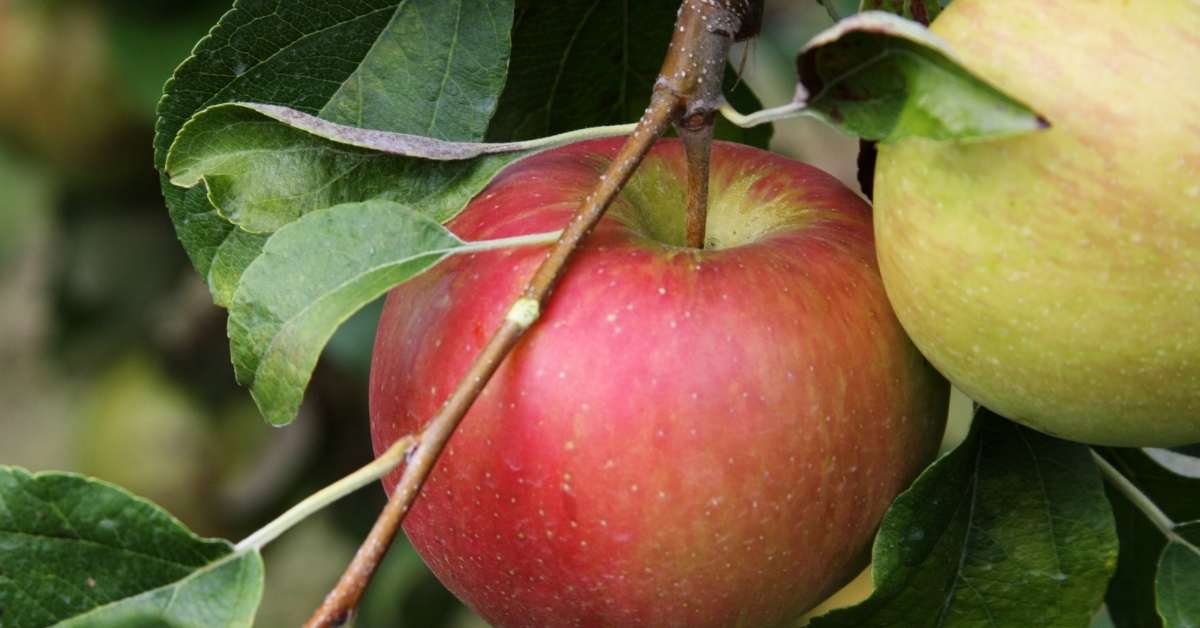
Some people have compared the flavor to apple and bourbon combined. It tastes like a good apple cider and stores well. Honeycrisp is a favorite choice for those who like to eat fresh apples out of hand. Honeycrisp apples keep well and produce delicious applesauce. This apple may not be your best choice if you like to freeze apples, however.
The trees appreciate adding calcium to their soil. The tree is small and may be grown in an orchard or the backyard. Honeycrisp needs a pollinator, so choose another Zone 4-8 apple, such as Golden Delicious, to ensure a good crop.
September Wonder Fuji (Fiero)
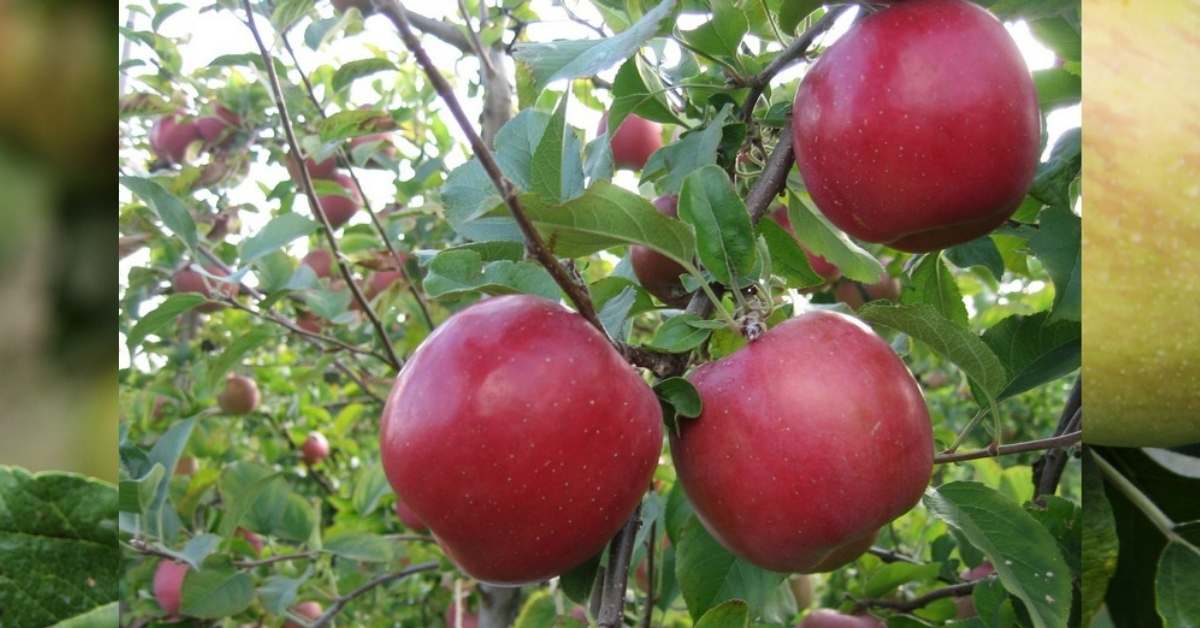
This resilient apple tree offers a delicate taste similar to the Fuji apple that you can buy at the supermarket. It needs a pollinator and is suitable for hardy Zones 4-8. The tree has crispy, juicy, sweet, and tangy apples that are great for eating by hand. This apple also bakes and stores well.
The September Wonder Fuji can be stored for up to six months. Granny Smith apples (Zones 5-8) are a great pollinator for this apple.
Peaches and pears and persimmons, apricots, plums, and cherries, are other fruit trees that survive cooler temperatures.
Persimmon Trees (Sharon Fruit) for Zone 5-8
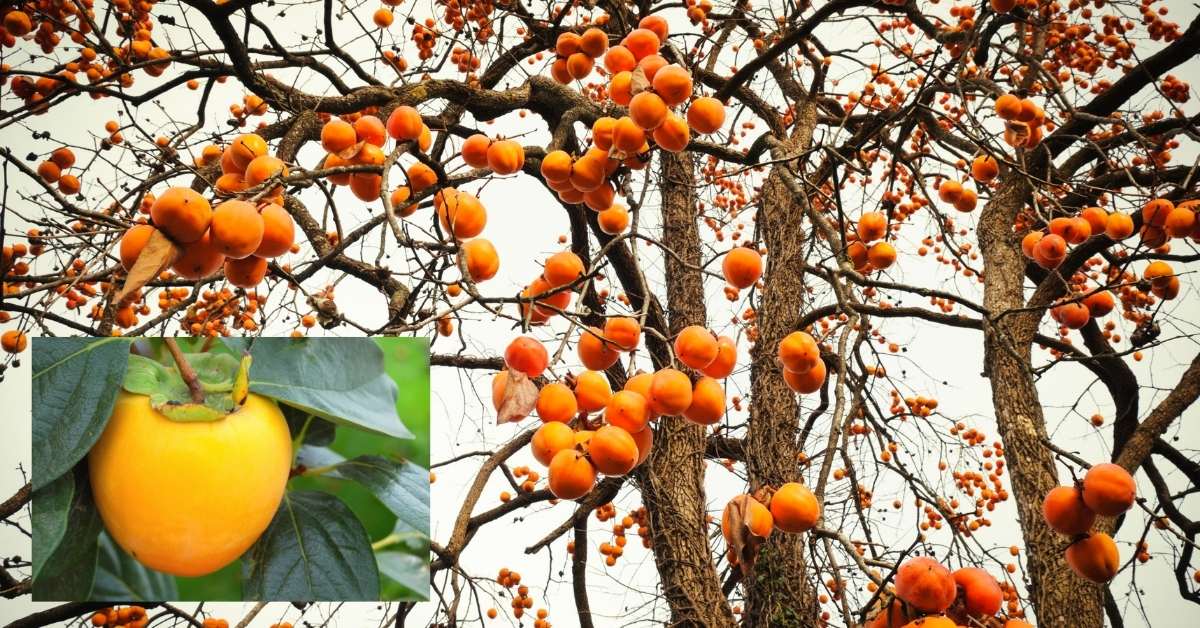
There are two types of persimmon trees, namely the Asian persimmon and the American persimmon. Both trees have some similar characteristics and some significant differences.
The Asian persimmon prefers growing in Zone 6 or 7 or higher. American persimmons do better in growing Zones 4 and 5. So if you need a hardier persimmon, choose an American persimmon tree. Persimmon trees prefer acid soils with a pH of 6.0 to 7.0 rather than alkaline soils with a pH of 6.0 to 7.0.
American persimmon trees tend to be larger and originated in North America. American persimmon trees are hardier than their Asian counterparts. These fruits are astringent, which means they are not sweet until they are soft and fully ripe.
The Prok American persimmon is a large tree that reaches about 30 feet tall. It is hardy from zone 5-8. It ripens in the late fall and is self-pollinating, so you only need to plant one tree to gain fruit.
The Yates American persimmon is one of the hardiest persimmons. This delightful tree is hardy Zones 4-10. It is cold-resistant and heat tolerant, and when fully mature, it has a taste comparable to an apricot. Although the tree is self-pollinating, planting two plants will yield more fruit. The fruit ripens in early September.
Cherries
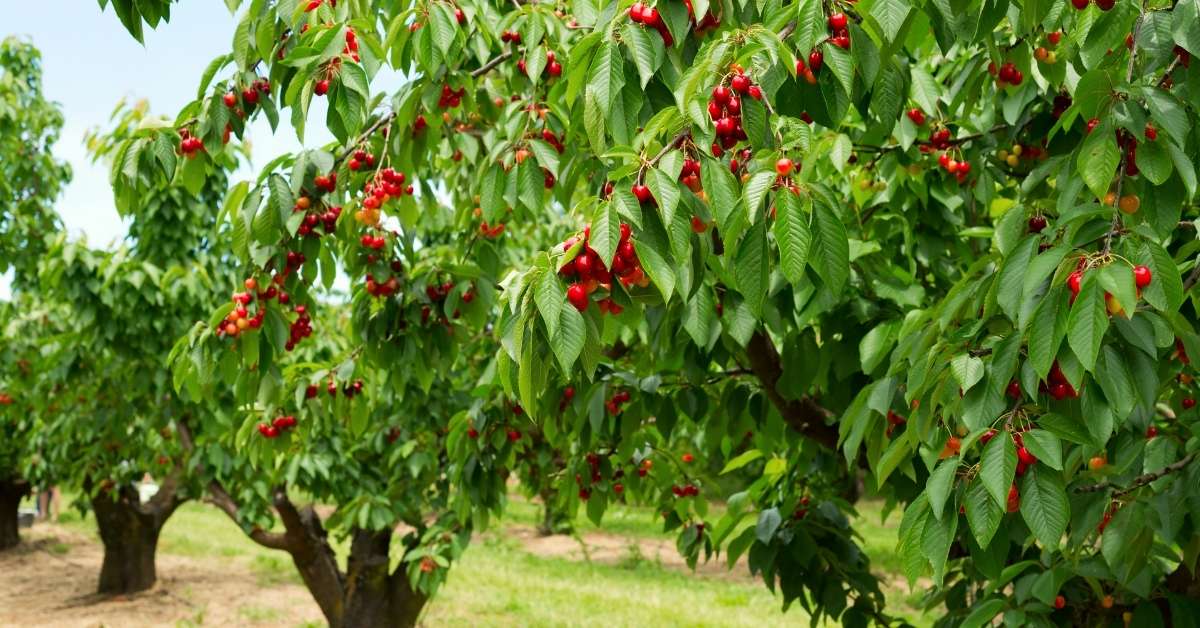
Cherries trees are another type of fruit that grows well in cooler climates. If you’d like to grow a sweet cherry, you’ll need to have room to plant two trees, as sweet cherries are not self-pollinating. Sour or tart cherries may be a better choice for people with smaller gardens, as they are self-pollinating.
The Montmorency cherry tree is one of the most popular tart cherry types. It produces a lovely crop of cherries toward the end of June and can come in either standard-sized trees or semi-dwarf trees. Other cherry trees that are tart, hardy, and come in smaller trees are Meteor and North Star.
Of the sweet types of cherries, choose Starcrimson, Compact Stella, or Glacier trees. Starcrimson and Compact Stella are self-fertile, so you can plant only one tree and get fruit. Bing cherries are the most well-known of the sweet cherries, but they have growing problems in Zone 5. Royal Rainier is a yellowish red cherry that produces a large crop but needs a pollinizer.
Pears Zones 5-8
Beurre Bosc Pear

This lovely pear has a long neck and round bottom, which is the classic pear shape. The Beurre Bosc pear has yellow skin with reddish accents and smooth, tender flesh. This sturdy pear grows well in Zones 5-8 and is excellent for eating fresh or baked. The Beurre Bosc pear needs a pollinator like the Bartlett pear for good pear production.
Kieffer Pear
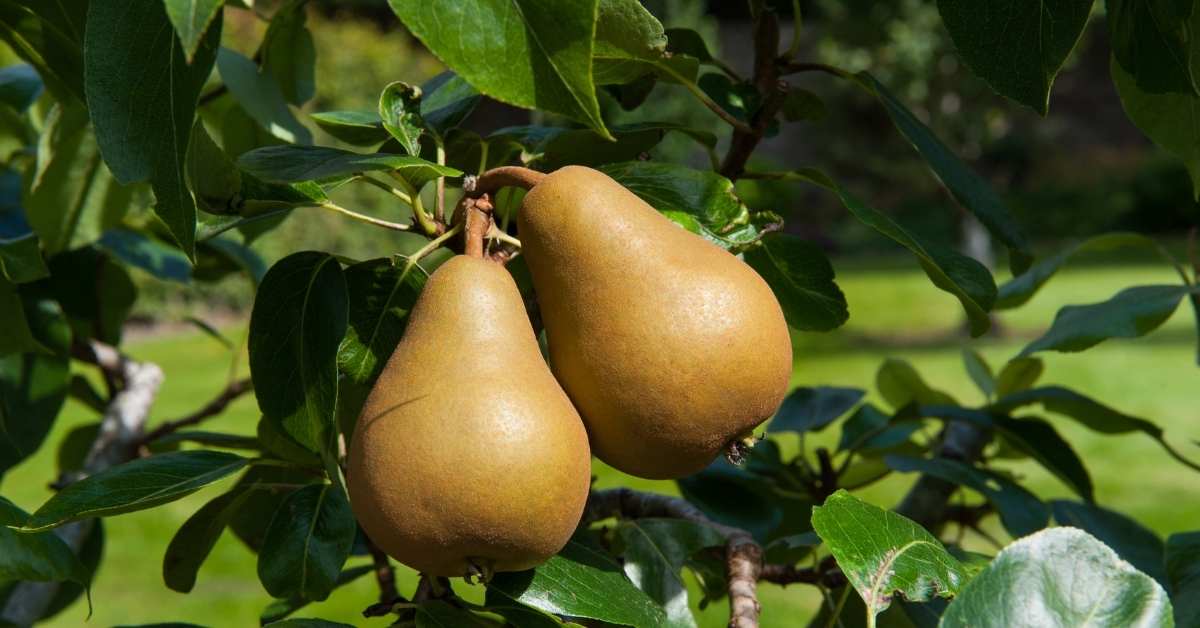
The Kieffer pear remains hardy through Zones 4-8. Pick these hardy pears when they are still firm, then store them in a cool place (60-70 degrees F.) until the pears finish ripening. This pear tree is self-pollinating and a good tree choice for canning and baking pears.
Pawpaw Trees
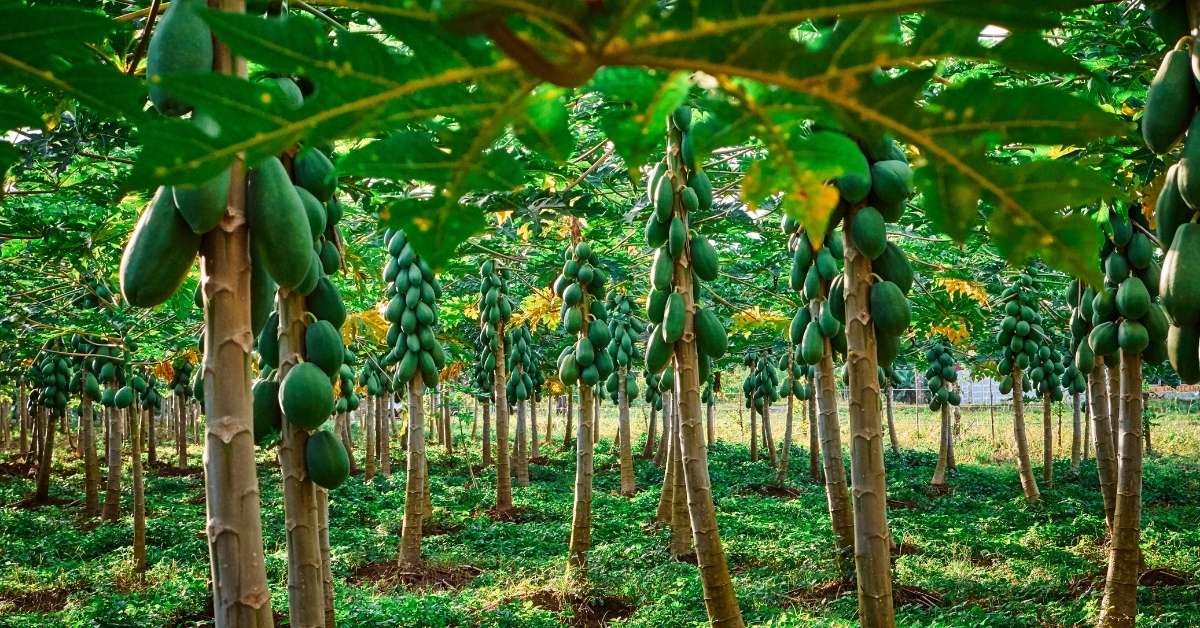
Pawpaws are a native fruit that tastes a bit like bananas. Pawpaws are endemic to the United States’ Midwest and Eastern regions. The foliage is the favorite and only food of the Zebra Swallowtail caterpillar and butterflies. Deer don’t like Pawpaw trees, which is advantageous for the people fighting with deer for fruit and fruit trees.
The tree is a bit difficult to transplant, but most pawpaw sellers have some great tips for getting into growing in your neighborhood.
The Wells pawpaw is hardy in zones 4 through 8, and it is cold hardy. The fruit is high in vitamins, protein, and minerals. The Wells pawpaw has green skin and orange flesh with a creamy texture. The tree is shaped like a pyramid and is an excellent choice for an ornamental tree, too.
The Pawpaw produces purple flowers in the spring and has leaves that look tropical. You should plant two different pawpaw trees for proper pollination. The fruit of the Pawpaw ripens in September.
Common places to find Pawpaw in the United States of America
Another delicious variant of this tropical taste tree is the Mango Pawpaw. Zones 4–8 are suitable for it. The fruit has a mango and vanilla custard flavor. To develop correctly, the Mango pawpaw tree, like other pawpaw trees, needs moderate shade to full sun and a pollinator to produce adequately. In October, this variety ripens.
Apricots

Wilson Delicious Apricot
Wilson Delicious Apricot is one of the best apricots for all-purpose use. The beautiful peach and golden-colored fruit have tasty orange flesh, whether eating it fresh or preserving it by canning, freezing, and drying. It was initially introduced in 1940. It ripens in July, is extremely sweet, and the tree is self-pollinating. Planting two hardy apricot trees will increase the amount of fruit you gain, however.
Harlow Apricot
The Harlow Apricot is disease resistant to brown rot and bacterial canker. It blooms late, so it avoids late April frosts. The fruit is freestone and produces medium-sized orange fruit in a small space. The Harlow Apricot has an enjoyable flavor and texture for any and all purposes. The tree is small enough bot be able to grow in yards or other small spaces. The Harlow apricot is hardy from planting Zone 5-8 and is self-pollinating.
Plum Trees
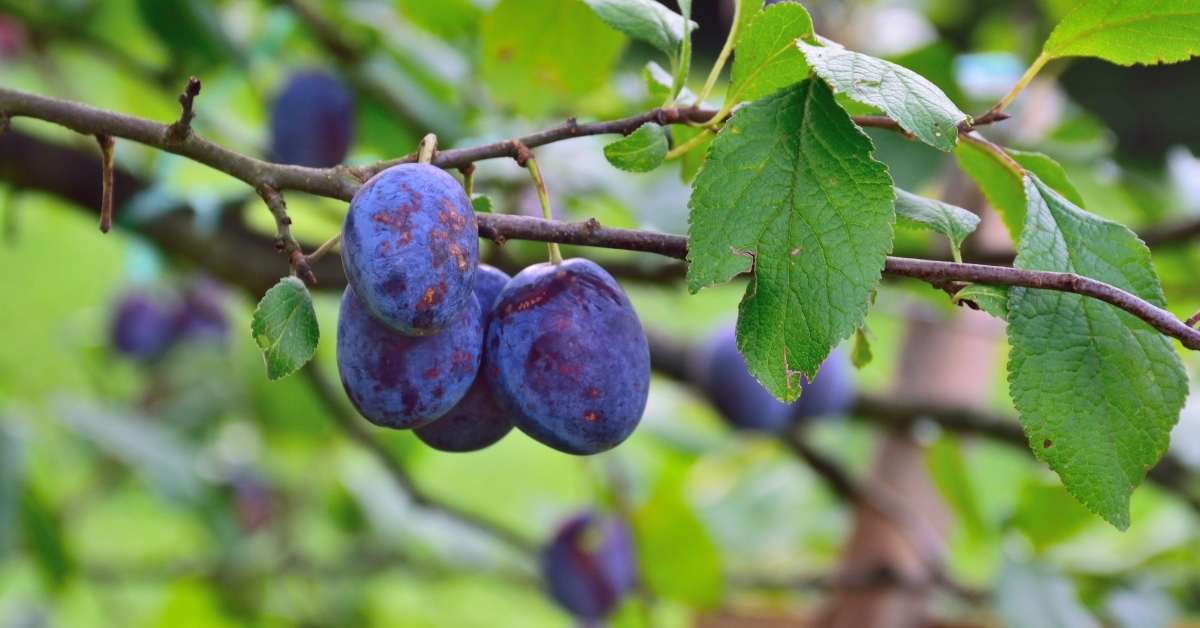
Native plum trees grow in many cold climates. One of the more popular cultivated plum trees that thrive in Zone 5-8 is the Stanley prune/plum. This tree grows to about 15 feet tall and produces a plethora of large, sweet black plums. After the first frost, when the plums are at their tastiest, several kinds are best picked.
Best Tasting Peaches Zone 5-8
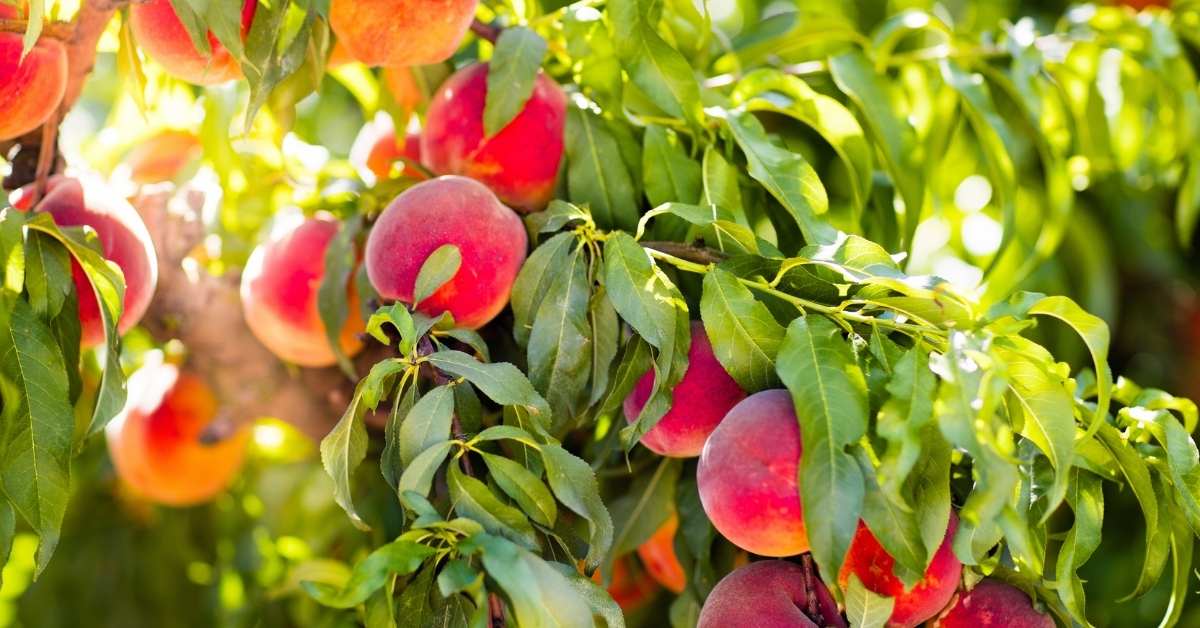
Peaches are renowned for being produced in Georgia and the Southern states, although they may also be grown in Zones 5-8. Here is a list of peach cultivars that thrive in these zones, along with a short description of each.
Indian Free
This peach has received high ratings and is strongly resistant to peach leaf curl. The tree needs a pollinizer, and it isn’t a pretty peach, but the taste more than makes up for its looks. Indian Free loves the hot late summer weather, so don’t plant this variety in places that get cool quickly after August.
June Pride
June Pride can stay on the tree for up to four weeks and is recommended for zones 6-9. This peach becomes ripe early in the season and has a lovely rich flavor. It hasn’t been grown much in Zone 5, but you could try it.
O’Henry
O’Henry reliably produces firm fruit almost every year in Zones 5-9. It is a large, late-season peach.
Snow Beauty
Snow Beauty is the largest of the peaches that thrive in Zones 5-6. It also excels in taste and ripens in the mid-season.
White Lady
White Lady peach is one of the tastiest white peaches for colder climates. This peach has high sugar and low acid and does well in Zone 5b.
Nut Trees for Colder Zones
Many nut trees get zapped by that last spring frost and don’t produce, so it is crucial to get the suitable varieties of nut trees that aren’t bothered by that last frost. Here are some descriptions of nut trees that may work for your garden and yard at Zone 5-8.
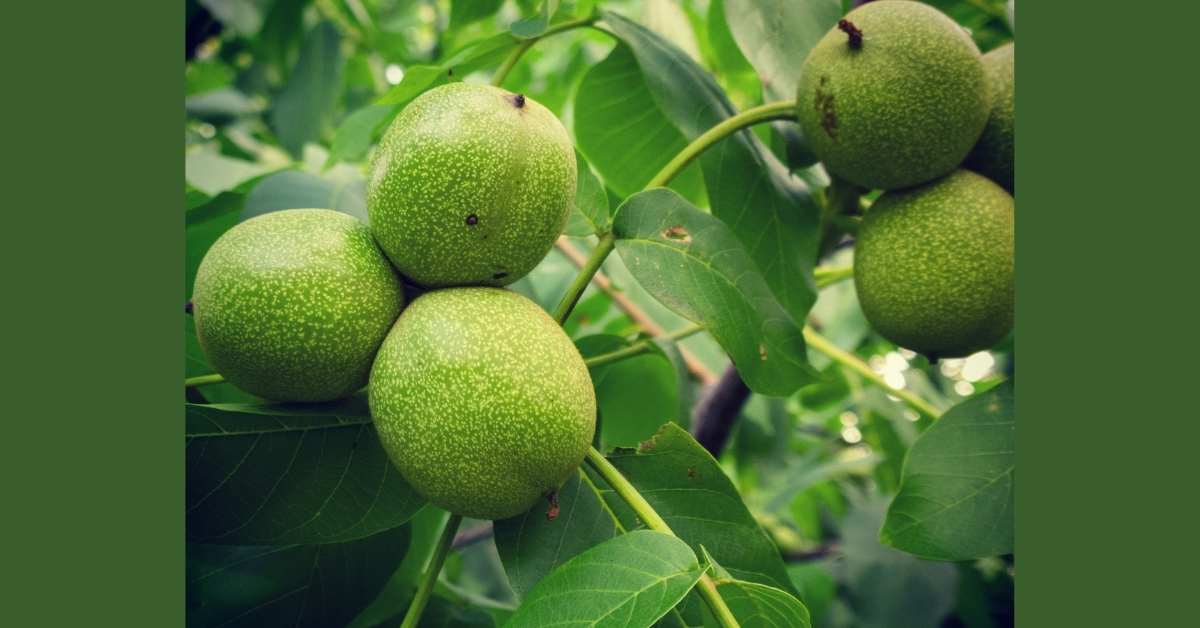
Black Walnuts
If you need shade, the black walnut grows to about 100 feet tall and is an excellent shade and nut producer. The drawback to growing the black walnut tree is that most other plants can’t grow around the base of the tree because of a chemical that the roots exude. Also, it takes about ten years of growth to get a good black walnut crop. A better choice might be the English walnut. English walnuts aren’t as toxic to the ground around them and produce nuts in about four years.
Hickory and Hican Nuts
Hickory nuts are tough to shell, so you might consider growing the Hican tree instead. Hican nuts are better tasting and more straightforward to shell than hickory nuts.
Hazelnuts
Hazelnuts grow on 10-foot shrubs, not trees. The leaves become a lovely orange-red in the autumn, and the twisted hazelnut branches provide for fascinating winter viewing.
Chestnuts
The American chestnut doesn’t exist anymore, but the Chinese chestnut proliferates to about 50 feet tall and produces nuts faster than many of the varieties of nut trees you can grow in Zone 5.
Almond Trees
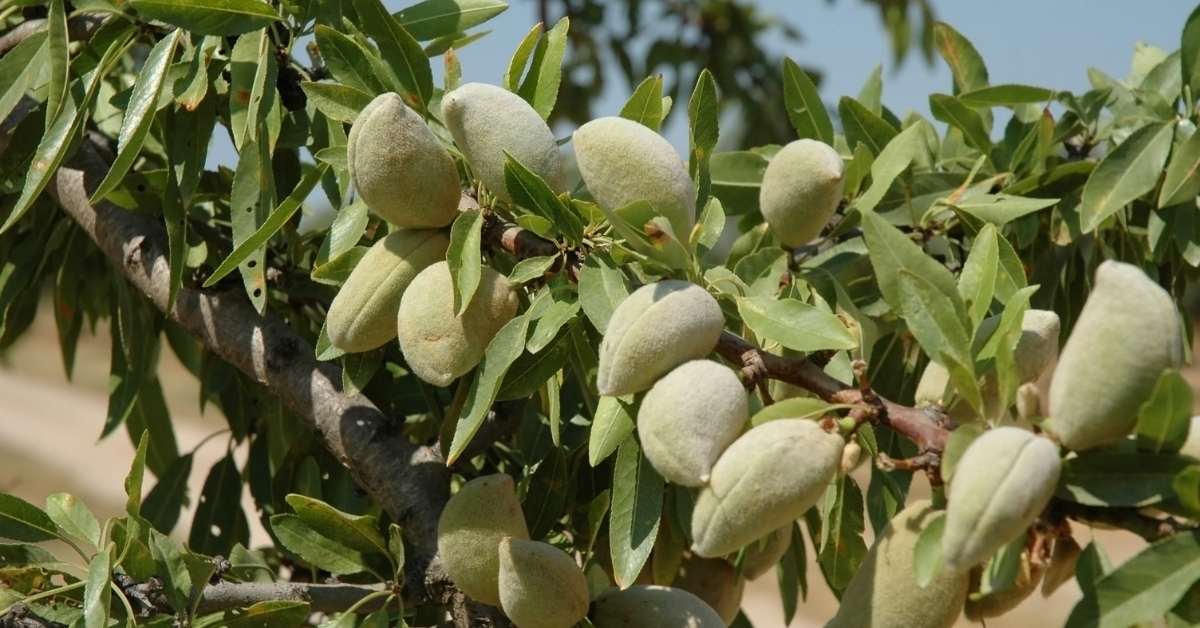
Many people want to know whether they can plant almond trees in Zone 5. There aren’t many hardy almond trees, but Hall’s Hardy Almond Tree may be worth a try. It’s said to be hardy in Zones 5-8. They are self-pollinating, prolific, and beautiful landscape trees that grow to reach between 15-20 feet tall.
These are some of the finest fruit and nut trees for growing well in Zones 5 and above. Keep an eye out for additional in-depth guides and displays of the most delicate plants and trees for your garden, and let us know what trees or flowers you’re going to plant next!
